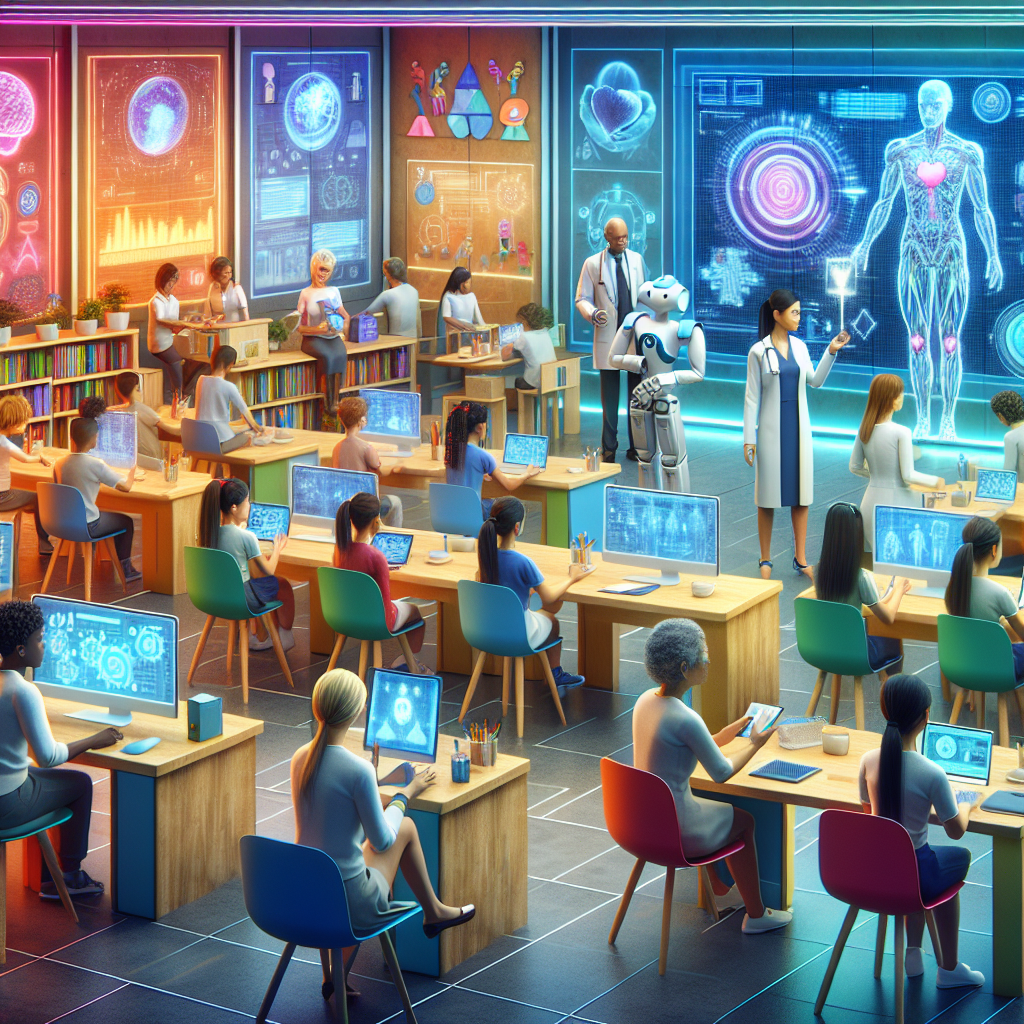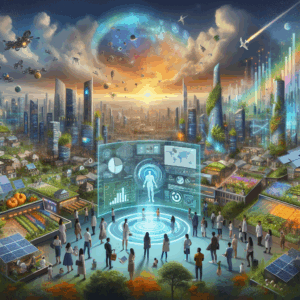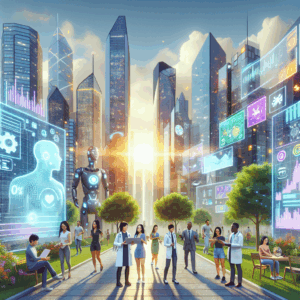The Role of AI and Technology in Education and Healthcare
Introduction
Artificial Intelligence (AI) and technology have become indispensable components of innovation across various sectors. Two areas that have significantly benefited from these advancements are education and healthcare. These sectors, foundational to societal development and well-being, have seen remarkable transformations with the integration of technology, paving the way for enhanced efficiency, accessibility, and personalized experiences. This blog post explores the innovations, benefits, challenges, and future trends of AI and technology in education and healthcare. We will delve into how these sectors are becoming increasingly intertwined with technological advancements and the implications they hold for the future.
Innovations in Education Technology
Education technology, or EdTech, has evolved dramatically over recent years. Online learning platforms like Coursera and Khan Academy have transformed the way students access knowledge, breaking geographical barriers and democratizing education. The introduction of adaptive learning software is one of the cornerstones of this transformation. Such software utilizes AI to tailor educational content based on individual student performance, creating a personalized learning journey. This adaptability supports learners of varying abilities, ensuring a more equitable learning process.
AI’s role extends further with analytics tools that track student progression, offering invaluable insights to educators. This data-driven approach allows teachers to identify areas where students may need additional help, enhancing overall educational outcomes. Moreover, the gamification of learning through mobile apps has increased student engagement significantly. By incorporating game-like features, educational content becomes more interactive, fostering an enjoyable learning experience that enhances retention and motivation.
Innovations in Healthcare Technology
The healthcare sector has not lagged in leveraging AI and technological advancements. Telemedicine has emerged as a crucial innovation, allowing patients to connect with healthcare providers remotely. This innovation has been particularly beneficial in underserved and rural areas where accessing healthcare services can be challenging. Remote patient monitoring, facilitated by wearable technology, enables continuous tracking of vital health metrics, ensuring timely medical intervention when necessary.
AI also plays a pivotal role in diagnostics and treatment personalization. By analyzing vast datasets, AI systems can identify patterns that may elude human practitioners, resulting in more accurate diagnostics. Furthermore, AI algorithms aid in devising personalized treatment plans, tailored to the genetic makeup and health history of individual patients. The integration of Electronic Health Records (EHR) has also streamlined care delivery, providing healthcare providers with comprehensive patient data at their fingertips, thereby enhancing the efficiency and quality of care.
Benefits of AI and Technology in Education
The incorporation of AI and technology in education presents multiple advantages. Enhanced engagement and interactivity are at the forefront, as technology facilitates a dynamic learning environment that captivates students’ attention. Additionally, these advancements increase accessibility for learners with diverse needs, offering customizable content that caters to individual requirements. The wealth of data gathered through educational technologies equips educators with insights to refine their teaching methods, allowing them to address learning gaps and improve overall instructional quality.
Benefits of AI and Technology in Healthcare
In healthcare, technology has significantly improved patient outcomes through precision medicine, which utilizes AI to tailor treatments to individual patients. This personalized approach enhances the effectiveness of interventions, reducing adverse effects and optimizing patient recovery. Technology also contributes to cost-efficiency and resource management within healthcare systems. By automating administrative tasks and optimizing patient pathways, AI reduces waste and streamlines operations. Furthermore, enhanced patient engagement is achieved through platforms that monitor treatment adherence, ensuring patients remain informed and compliant with their healthcare plans.
Challenges and Ethical Considerations
Despite the benefits, the integration of AI and technology in education and healthcare poses several challenges. Data privacy concerns are paramount, as the handling of sensitive information necessitates stringent security measures to prevent breaches. There is also the potential for biases in AI algorithms, which can affect educational outcomes and healthcare decisions, underscoring the need for transparency and fairness in AI deployment. Additionally, the digital divide remains a critical issue, as equitable access to technology is not universally attainable. Ensuring all individuals can benefit from these innovations requires addressing disparities in technology access and infrastructure.
Future Trends in Education and Healthcare Technology
Looking ahead, education is anticipated to embrace blended learning environments, combining the best aspects of online and in-person instruction. This hybrid approach seeks to provide students with a comprehensive and flexible education experience. In healthcare, advancements in wearable technology are expected to revolutionize personal health monitoring. These devices will integrate seamlessly into daily life, offering continuous health insights and proactive medical care. AI-driven innovations are poised to shape the future of both sectors, pushing the boundaries of what is possible in personalized education and precision medicine.
Code Implementation or Data Visualization Section
For those interested in exploring AI’s potential in education, a simple example could involve predicting student performance using machine learning algorithms. Python libraries like Scikit-learn could be employed to create predictive models that identify at-risk students based on historical data and performance metrics. Visualizations are equally crucial in presenting the impact of technology on educational outcomes and healthcare efficiency. Tools such as Matplotlib or Seaborn could be leveraged to generate graphs and charts, offering a clear depiction of trends and insights.
Conclusion
In conclusion, AI and technology are reshaping the landscapes of education and healthcare, driving innovation and offering substantial benefits. However, the journey is not without its challenges, necessitating vigilance in ethical considerations and access equity. Continuous innovation coupled with responsible implementation ensures that technology serves as a catalyst for positive change. Stakeholders from both sectors are called upon to embrace these advancements, fostering improved outcomes, greater access, and ultimately, a better quality of life for individuals worldwide.





